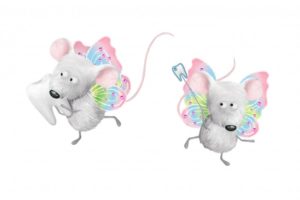What Are International Myths About the Tooth Fairy?
December 4, 2021

Remember how exciting it was as a child to leave a newly lost tooth under your pillow before bed and wonder what president would be on the bill in the tooth’s place when you woke up? Those were great times.
The tooth fairy is quite famous with a legend that extends well beyond the United States. Read on to learn some international tooth fairy stories in Palm Harbor from your pediatric dentist. What are the tooth fairy’s origins and how do rodents often play a prominent role?
Origins of the Tooth Fairy
In European countries, children were taught to bury their teeth instead of placing them under their pillow. But they didn’t do this for spare change – they were taught that burying their teeth would give them protection against witches and evil spirits. Yikes! Believe it or not, this was seen as a way to comfort children, not as a way to give them terrible nightmares for the rest of their lives.
Traditions varied throughout times, religions, and cultures. Some European children were encouraged to burn their baby teeth as an assurance of a peaceful death and afterlife. A Nordic tradition treated a child’s first lost tooth like it was a treasure. The Vikings believed that carrying the tooth of a child with them into battle would bring them a victory against their enemies.
Mouse Looking for Molars
While the tooth fairy has evolved and changed over time, the most common tooth myth does not actually involve a fairy at all. In Russia and China, the children are told that a mouse would take their teeth while they sleep.
In Latin countries, the tooth mouse goes by a specific name – “Raton Parez.” This incarnation is particularly close to the tooth fairy we’re familiar with in the United States because Raton also retrieves the tooth from under the pillow and puts money in its place as a gift. One reason this myth may be so popular around the world is that mice’s teeth continue to grow throughout their whole lives.
Tooth Witch of The Middle Ages
Legend has it that Europeans in the Middle Ages believed a witch could curse someone by using their teeth, so it was important to dispose of baby teeth correctly. Teeth were swallowed, buried, or burned. Sometimes baby teeth were even left for rodents to eat. Despite being pests, rodents were valued for their strong teeth; it was generally believed a tooth fed to a rodent would lead to the development of a healthy and strong adult tooth.
Tooth Fairy Arrives in France During 1700s
The tooth fairy myth began to show more characteristics of a conventional fairytale in 18th century France. La Bonne Petite Souris, a bedtime story, tells the strange tale of a fairy that changes into a mouse to help a good queen defeat an evil king. The mouse secretly hides under the evil king’s pillow and defeats him by knocking out his teeth.
Vikings Inspired Money Under the Pillow
The idea of exchanging a tooth for coins originated in Scandinavia. Vikings paid children for a lost tooth. Teeth were worn on necklaces as good luck charms in battle. While the idea of exchanging a tooth for coins quickly spread throughout the rest of Europe, a fierce, horn-helmeted Viking is far cry from the image of a fairy collecting teeth.
While the tooth fairy as children know it today didn’t make an appearance until the 1900s, tooth myths and rites of passage have existed in numerous cultures since the dawn of time. Ask your pediatric dentist in Palm Harbor for her take on the tooth fairy during your child’s next dental cleaning and exam!
About the Author
Dr. Maggie Davis & Associates do a little bit of everything in pediatric dentistry. They use all-digital, safe technology for efficient appointments, special-needs children are welcome, state-of-the-art sterilization is implemented, sedation dentistry is utilized, and there is an on-site orthodontist available in addition to board-certified pediatric dentists. It’s pretty neat to learn about all the variations of the tooth fairy and the associated traditions. We can help make sure your child’s teeth are fairy-ready with a dental cleaning and exam, which you can schedule on our website or by calling (727) 786-7551.
